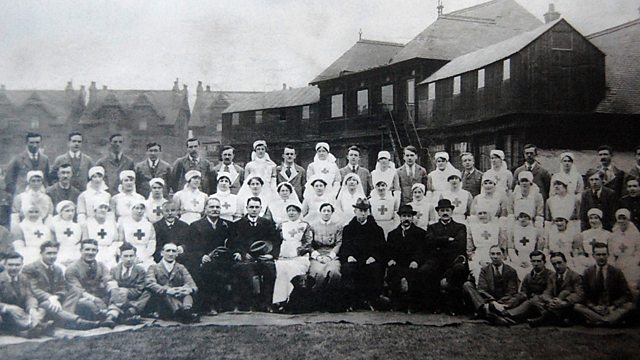Trent Bridge, Nottingham: Where Cricket Made Way for War Casualties
The cricket grounds that became a war hospital
First class cricket was suspended during the four seasons of the war and many county buildings were requisitioned by the War Office. These included two Pavilion buildings at Trent Bridge Cricket Ground, which were taken over in 1915, to accommodate a military hospital. At the same time hundreds of players either enlisted as volunteers or joined their Territorial Army regiments ready to fight.
Between 1915 and March 1919; 3,553 patients were treated in rooms in the Main Pavilion and Old Ladies Pavilion. Both were slightly enlarged to accommodate around 300 beds by the time it closed. Donations from the Freemasons in Nottinghamshire went to create ‘Electrical and Mechanical Wards’, which were used to help rehabilitate wounded soldiers.
Six cricketers with connections to Notts County died in the conflict, the best known being William Riley; a professional who played with the club for five years prior to the war. The amateur, Arthur Carr was recalled to his TA regiment in August but survived to Captain both Notts County and England in the 1920s.
Location: Trent Bridge Cricket Ground, Nottingham NG2 6AG
Image shows nurses and staff in front of the women’s pavilion, courtesy of Peter Wynne-Thomas
Presented by Celia Kellett
Duration:
This clip is from
Featured in...
![]()
91�ȱ� Radio Nottingham—World War One At 91�ȱ�
Places around Nottingham that tell a story of World War One
![]()
Sport—World War One At 91�ȱ�
The devastating impact on sporting life and the rise of women's football
More clips from World War One At 91�ȱ�
-
![]()
The loss of HMY Iolaire
Duration: 18:52
-
![]()
Scotland, Slamannan and the Argylls
Duration: 07:55
-
![]()
Scotland Museum of Edinburgh mourning dress
Duration: 06:17
-
![]()
Scotland Montrose 'GI Brides'
Duration: 06:41







